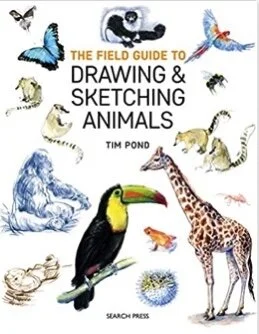2nd June 2020
Animals
artist Tim Pond gave a workshop called ‘Skulls! Drawing with Tim Pond’. You can watch the video replay below:
“Skulls!” Drawing with Tim Pond
Have you ever wondered what’s beneath the fur, feathers, skin, scales and blubber of your favourite animals? Amazingly, there are striking similarities in both animal bones and muscles, no matter what species you look at. Getting a sense of the skull beneath the head is a fundamental skill for drawing lifelike animals. By sketching the cranium rather than the face, your animal sketch will take on a 3D form.
In this workshop, you will learn to:
Deepen your artistic skills by extending your understanding of anatomy of the skull
Investigate different approaches to sketching skulls from linear bug line sketches to dynamic drawings
Learn how to measure proportions and angles
Tackle the challenges of planar analysis and foreshortening
Learn to draw from shape to shape
Learn about chiaroscuro, modelling and core shadow
Learn to read skulls and identify species, just like a CSI detective
Understand why some male and female skulls of the same species appear different
We’ll explore how to look at animals from the inside out. Starting with the skull, we’ll gather information. Teeth give us clues about diet - large, blunt teeth for eating tough vegetation; or sharp fangs for cutting meat. Eye sockets give us clues about habits and habitats; for a night hunter or a murky water dweller, big eyes are an advantage, and there are also other reasons that we shall be finding out about in this workshop too. We will also discuss the difference between antlers, horns and tusks, and the way some of these animals have used these to help them succeed in their habitat. Come and join Tim Pond for an intriguing session brimming full of tips, both scientific and artistic.
For a peek into the Tim Pond’s sketchbook, take a look at this video by Elizabeth from Marine Mumbles (marinemumbles.com). Elizabeth and Tim take a sketch tour around the SEA LIFE London Aquarium. Watch them tackle sketching sharks, rays, jellyfish, penguins and more!
Elizabeth, a marine biologist with an infectious love of oceans and ocean life shares her passion on the Marine Mumbles YouTube channel, with videos which combine art, science and wonder at the beauty of the marine world. You can also find Marine Mumbles at www.marinemumbles.com, on Twitter and Instagram, and you can purchase marine inspired art from her Etsy shop.
Tim Pond’s book is called ‘The Field Guide to Drawing and Sketching Animals’. It is an inspiring and practical guide for artists of all abilities which fuses science with art to create sketches of animals filled with life and movement.
Find Tim online through his website timpond.co.uk, as well as on Facebook and Twitter.
Nature journaling prompts and ideas
Animals are tricky to sketch because they move! But a sleeping dog or cat can make a perfect nature journal subject. Try sketching your most loved pet while they are resting. What do you notice? Can you look at them with new eyes and wonder about what you see?
Birds are a wonderful subject for a nature journal page. Bird drawings are tricky to capture in the field because of the quick-moving subject. You can begin by practicing with photographs and then move on to attempting to sketch from life. Remember that when drawing birds from life you might only be able to get down a few lines before the animal moves. This is fine! Sketch the bird in one position, if it moves, start a new sketch in this new position. If you notice it moves back to a similar position as before, work again on your original sketch to build up detail. Go back and forward between several sketches as the animal moves around.
Do you have a garden at home? Take a walk through your flower or vegetable garden and see if you can find some critters to sketch. Caterpillars, grasshoppers, slugs and snails might be the bane of a vegetable gardener’s existence but they make wonderful nature journaling subjects!
If finding a live animal subject is not possible, why not sketch from a live webcam? Check out the links below in the Resources section of this page.
Cat Smith from Wildlife by Art Cat has generously given us some downloadable PDFs for nature-loving children to enjoy!
Click on the words below each image to download the PDF
Learn more
Here are some links to get you started sketching live animals. Why not use the birds in your garden, or your pet as subjects for study? Using video links and webcams is a great way to observe wildlife, and learn to draw moving animals. You can also use the resources from the ‘Nature Finds’ selection of natural history museums to help you with animal anatomy.
Want to draw elephants on the African continent, sketch jellyfish on a coral reef, or maybe you want to paint goats on a farm? Whatever your animal interest, you can observe creatures of every kind, right across the world on live webcams! Wherever you are and whatever time of day it is, there is always something you can watch, study and draw! Check out these great live cams here at Explore.org.
If that’s not enough creatures for you, here are even more suggestions for feeds where you can watch wildlife - live! Find animals from British badgers to arctic polar bears here!














